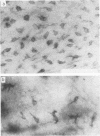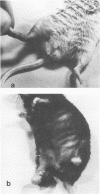Abstract
Skin Langerhans cells have been shown to be very efficient in presenting antigens to T-helper cells and stimulating the immune response. The present study demonstrates their essential role in the control of primary herpetic infections in the skin. Two unrelated stimuli (abrasion and steroids) were shown to cause depletion of the Langerhans cells in the murine epidermis, and both caused enhancement of the virulence of herpes simplex type 1 (HSV-1) in the skin. The Langerhans cell density was found to be lower in the skin of the ear than in the footpad. HSV-1 was consistently more virulent when injected into the ear epidermis than in the footpad. Thus, HSV-1 pathogenicity in mouse skin depends on the mouse age and strain, the virus strain, and the state of the epidermal Langerhans cells. These findings are discussed in relation to the antigen-presenting cell function of the Langerhans cells.
Full text
PDF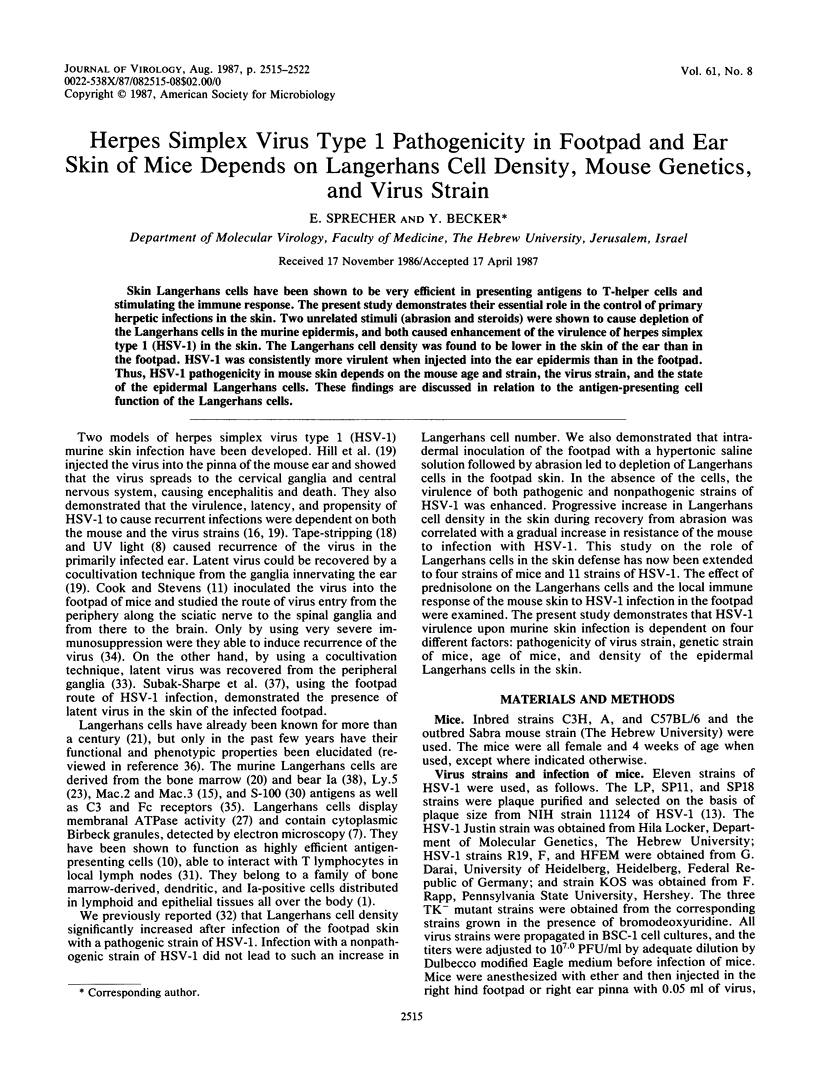

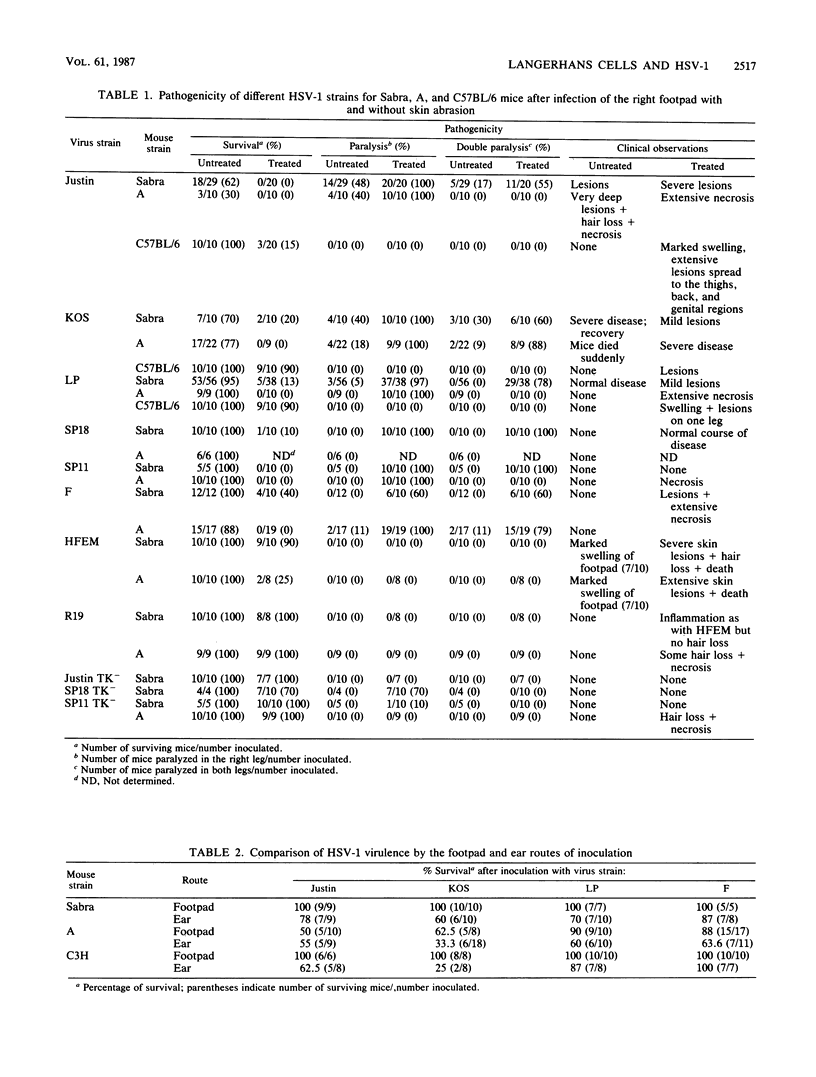
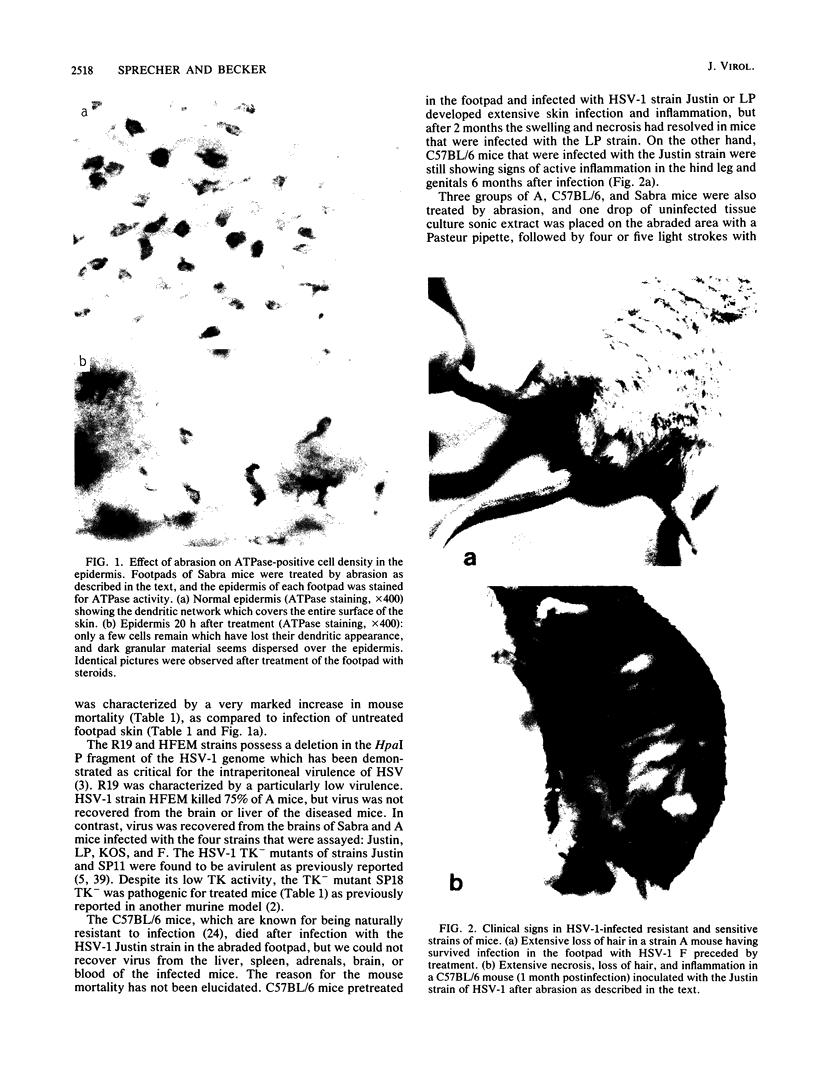
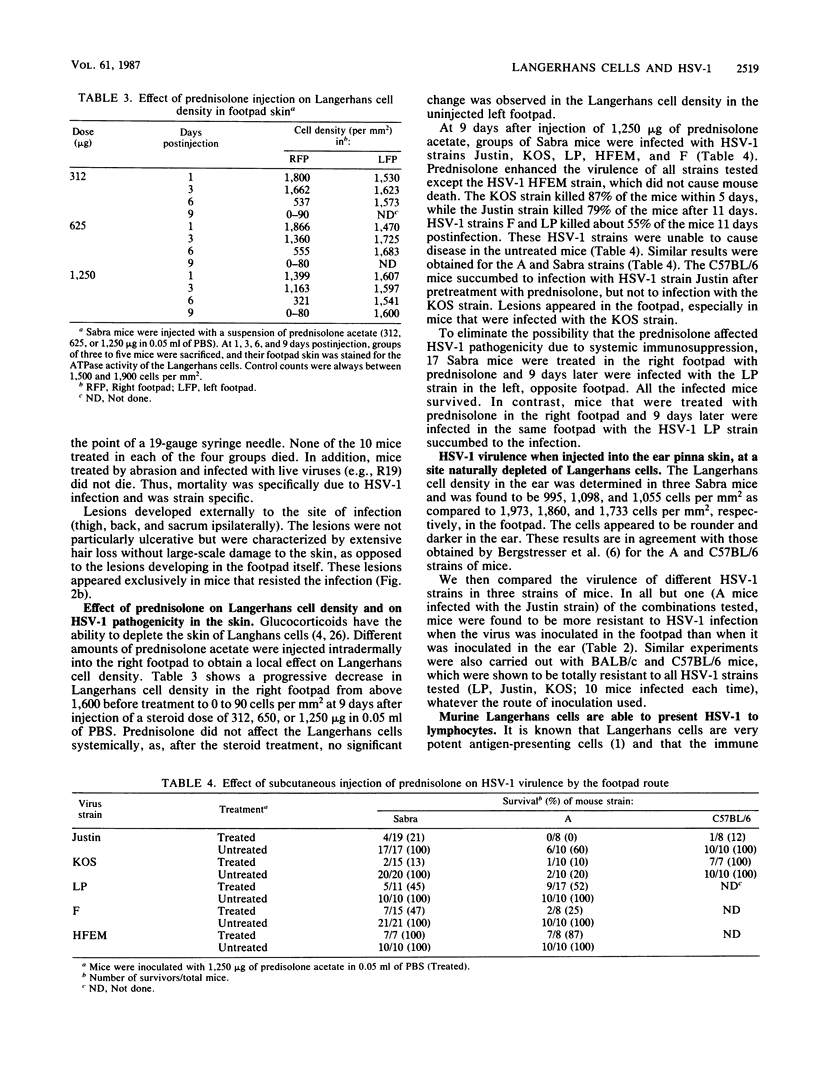
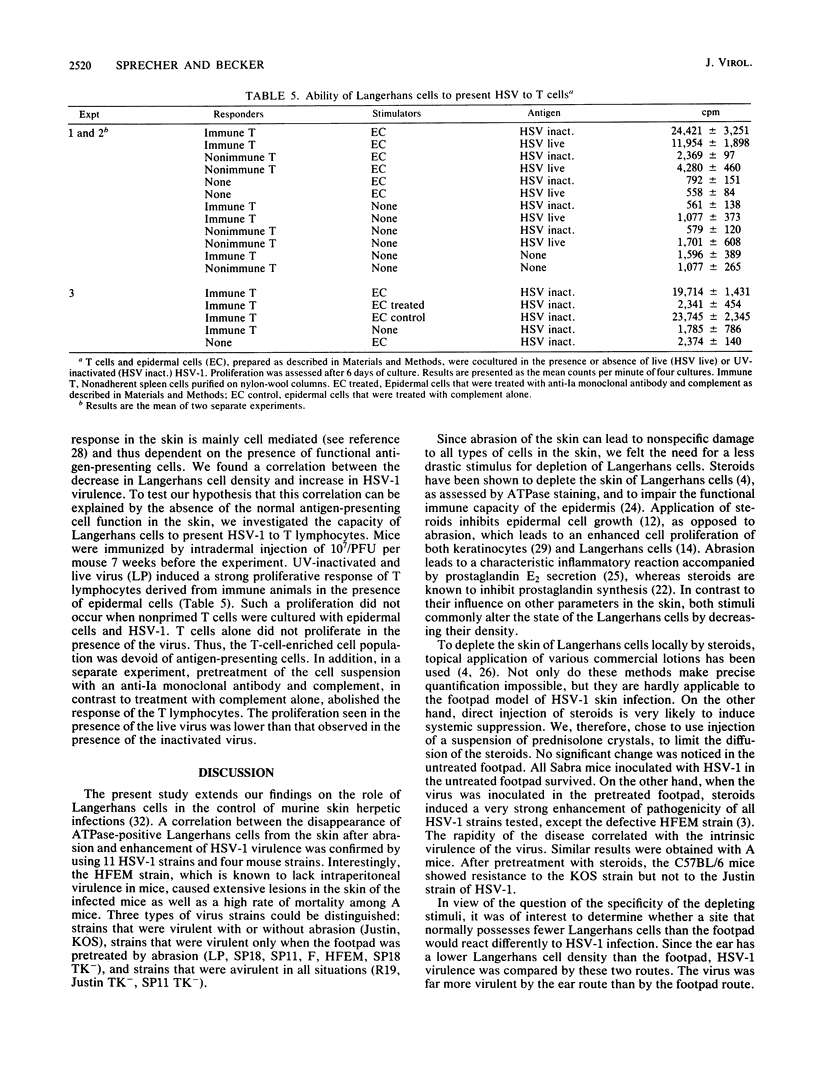
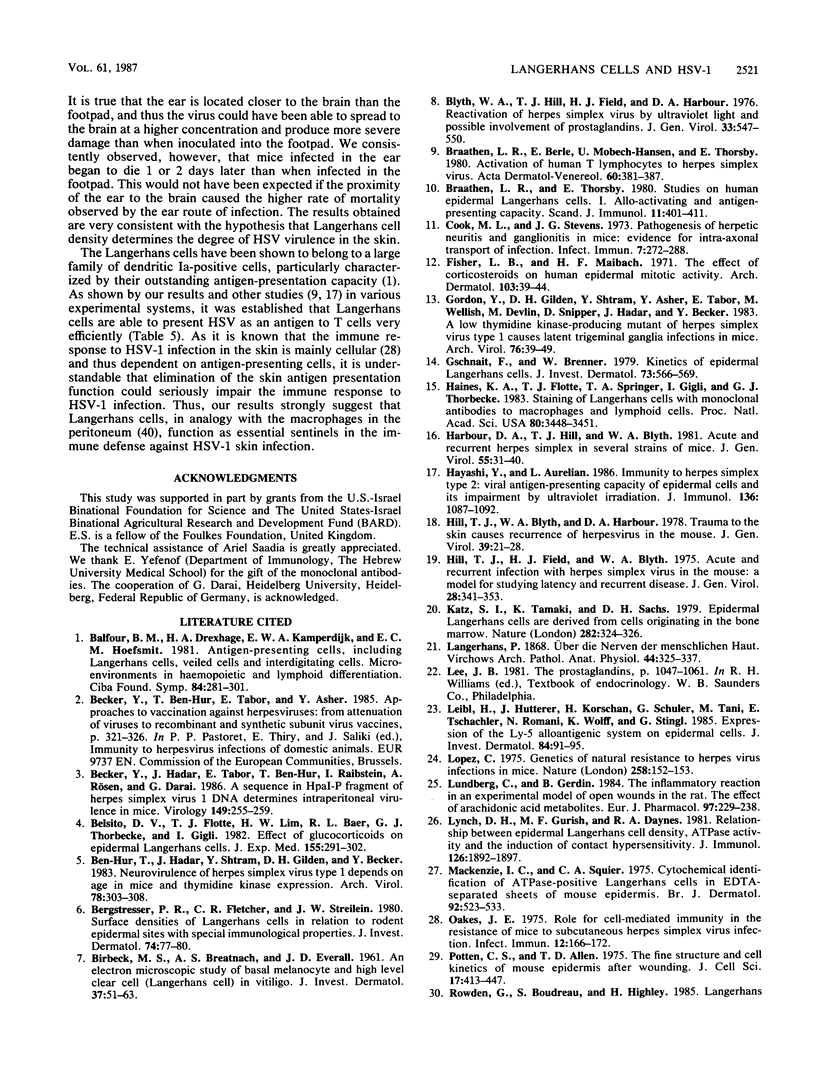
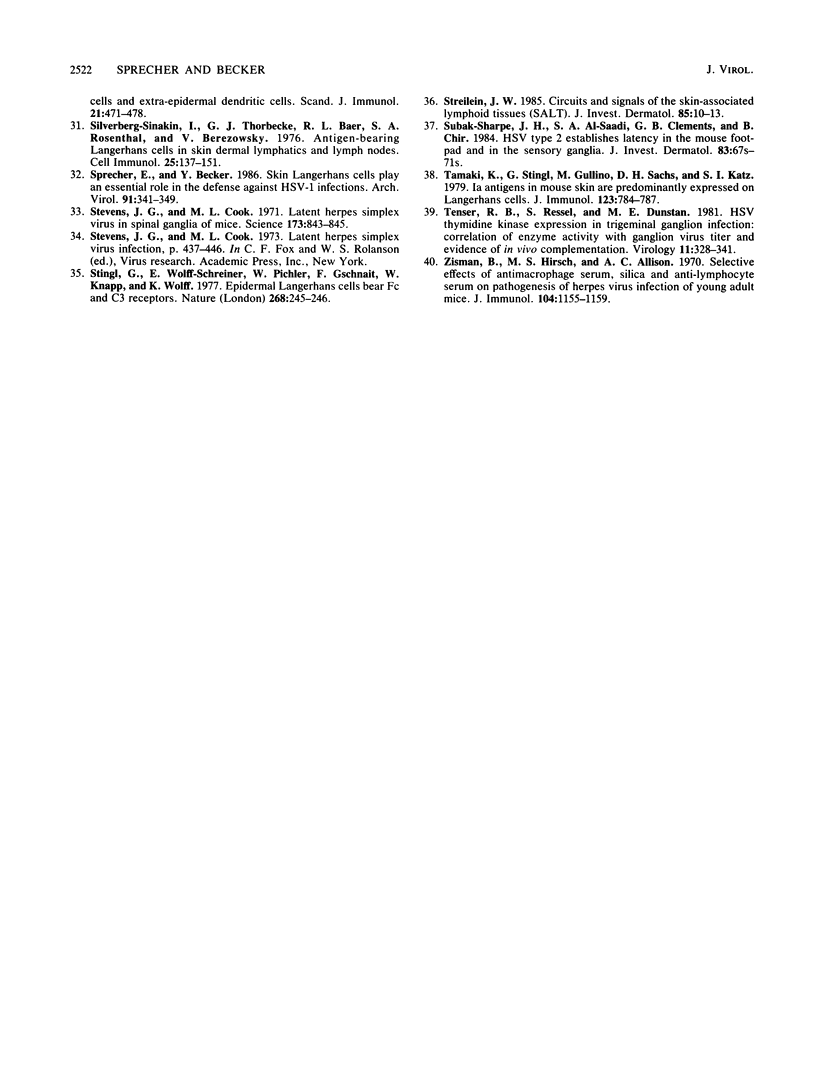
Images in this article
Selected References
These references are in PubMed. This may not be the complete list of references from this article.
- Balfour B. M., Drexhage H. A., Kamperdijk E. W., Hoefsmit E. C. Antigen-presenting cells, including Langerhans cells, veiled cells and interdigitating cells. Ciba Found Symp. 1981;84:281–301. doi: 10.1002/9780470720660.ch15. [DOI] [PubMed] [Google Scholar]
- Becker Y., Hadar J., Tabor E., Ben-Hur T., Raibstein I., Rösen A., Darai G. A sequence in HpaI-P fragment of herpes simplex virus-1 DNA determines intraperitoneal virulence in mice. Virology. 1986 Mar;149(2):255–259. doi: 10.1016/0042-6822(86)90128-5. [DOI] [PubMed] [Google Scholar]
- Belsito D. V., Flotte T. J., Lim H. W., Baer R. L., Thorbecke G. J., Gigli I. Effect of glucocorticosteroids on epidermal Langerhans cells. J Exp Med. 1982 Jan 1;155(1):291–302. doi: 10.1084/jem.155.1.291. [DOI] [PMC free article] [PubMed] [Google Scholar]
- Ben-Hur T., Hadar J., Shtram Y., Gilden D. H., Becker Y. Neurovirulence of herpes simplex virus type 1 depends on age in mice and thymidine kinase expression. Arch Virol. 1983;78(3-4):303–308. doi: 10.1007/BF01311326. [DOI] [PubMed] [Google Scholar]
- Bergstresser P. R., Fletcher C. R., Streilein J. W. Surface densities of Langerhans cells in relation to rodent epidermal sites with special immunologic properties. J Invest Dermatol. 1980 Feb;74(2):77–80. doi: 10.1111/1523-1747.ep12519909. [DOI] [PubMed] [Google Scholar]
- Blyth W. A., Hill T. J., Field H. J., Harbour D. A. Reactivation of herpes simplex virus infection by ultraviolet light and possible involvement of prostaglandins. J Gen Virol. 1976 Dec;33(3):547–550. doi: 10.1099/0022-1317-33-3-547. [DOI] [PubMed] [Google Scholar]
- Braathen L. R., Berle E., Mobech-Hanssen U., Thorsby E. Studies on human epidermal Langerhans' cells: II. Activation of human T lymphocytes to herpes simplex virus. Acta Derm Venereol. 1980;60(5):381–387. [PubMed] [Google Scholar]
- Braathen L. R., Thorsby E. Studies on human epidermal Langerhans cells. I. Allo-activating and antigen-presenting capacity. Scand J Immunol. 1980;11(4):401–408. doi: 10.1111/j.1365-3083.1980.tb00006.x. [DOI] [PubMed] [Google Scholar]
- Cook M. L., Stevens J. G. Pathogenesis of herpetic neuritis and ganglionitis in mice: evidence for intra-axonal transport of infection. Infect Immun. 1973 Feb;7(2):272–288. doi: 10.1128/iai.7.2.272-288.1973. [DOI] [PMC free article] [PubMed] [Google Scholar]
- Fisher L. B., Maibach H. I. The effect of corticosteroids on human epidermal mitotic activity. Arch Dermatol. 1971 Jan;103(1):39–44. [PubMed] [Google Scholar]
- Gordon Y., Gilden D. H., Shtram Y., Asher Y., Tabor E., Wellish M., Devlin M., Snipper D., Hadar J., Becker Y. A low thymidine kinase-producing mutant of herpes simplex virus type 1 causes latent trigeminal ganglia infections in mice. Arch Virol. 1983;76(1):39–49. doi: 10.1007/BF01315702. [DOI] [PubMed] [Google Scholar]
- Gschnait F., Brenner W. Kinetics of epidermal Langerhans cells. J Invest Dermatol. 1979 Dec;73(6):566–569. doi: 10.1111/1523-1747.ep12541607. [DOI] [PubMed] [Google Scholar]
- Haines K. A., Flotte T. J., Springer T. A., Gigli I., Thorbecke G. J. Staining of Langerhans cells with monoclonal antibodies to macrophages and lymphoid cells. Proc Natl Acad Sci U S A. 1983 Jun;80(11):3448–3451. doi: 10.1073/pnas.80.11.3448. [DOI] [PMC free article] [PubMed] [Google Scholar]
- Harbour D. A., Hill T. J., Blyth W. A. Acute and recurrent herpes simplex in several strains of mice. J Gen Virol. 1981 Jul;55(Pt 1):31–40. doi: 10.1099/0022-1317-55-1-31. [DOI] [PubMed] [Google Scholar]
- Hayashi Y., Aurelian L. Immunity to herpes simplex virus type 2: viral antigen-presenting capacity of epidermal cells and its impairment by ultraviolet irradiation. J Immunol. 1986 Feb 1;136(3):1087–1092. [PubMed] [Google Scholar]
- Hill T. J., Blyth W. A., Harbour D. A. Trauma to the skin causes recurrence of herpes simplex in the mouse. J Gen Virol. 1978 Apr;39(1):21–28. doi: 10.1099/0022-1317-39-1-21. [DOI] [PubMed] [Google Scholar]
- Hill T. J., Field H. J., Blyth W. A. Acute and recurrent infection with herpes simplex virus in the mouse: a model for studying latency and recurrent disease. J Gen Virol. 1975 Sep;28(3):341–353. doi: 10.1099/0022-1317-28-3-341. [DOI] [PubMed] [Google Scholar]
- Katz S. I., Tamaki K., Sachs D. H. Epidermal Langerhans cells are derived from cells originating in bone marrow. Nature. 1979 Nov 15;282(5736):324–326. doi: 10.1038/282324a0. [DOI] [PubMed] [Google Scholar]
- Leibl H., Hutterer J., Korschan H., Schuler G., Tani M., Tschachler E., Romani N., Wolff K., Stingl G. Expression of the Ly-5 alloantigenic system on epidermal cells. J Invest Dermatol. 1985 Feb;84(2):91–95. doi: 10.1111/1523-1747.ep12274957. [DOI] [PubMed] [Google Scholar]
- Lopez C. Genetics of natural resistance to herpesvirus infections in mice. Nature. 1975 Nov 13;258(5531):152–153. doi: 10.1038/258152a0. [DOI] [PubMed] [Google Scholar]
- Lundberg C., Gerdin B. The inflammatory reaction in an experimental model of open wounds in the rat. The effect of arachidonic acid metabolites. Eur J Pharmacol. 1984 Jan 27;97(3-4):229–238. doi: 10.1016/0014-2999(84)90454-0. [DOI] [PubMed] [Google Scholar]
- Lynch D. H., Gurish M. F., Daynes R. A. Relationship between epidermal Langerhans cell density ATPase activity and the induction of contact hypersensitivity. J Immunol. 1981 May;126(5):1892–1897. [PubMed] [Google Scholar]
- Mackenzie I. C., Squier C. A. Cytochemical identification of ATPase-positive langerhans cells in EDTA-separated sheets of mouse epidermis. Br J Dermatol. 1975 May;92(5):523–533. doi: 10.1111/j.1365-2133.1975.tb03120.x. [DOI] [PubMed] [Google Scholar]
- Oakes J. E. Role for cell-mediated immunity in the resistance of mice to subcutaneous herpes simplex virus infection. Infect Immun. 1975 Jul;12(1):166–172. doi: 10.1128/iai.12.1.166-172.1975. [DOI] [PMC free article] [PubMed] [Google Scholar]
- Potten C. S., Allen T. D. The fine structure and cell kinetics of mouse epidermis after wounding. J Cell Sci. 1975 Mar;17(3):413–447. doi: 10.1242/jcs.17.3.413. [DOI] [PubMed] [Google Scholar]
- Rowden G., Boudreau S., Higley H. Langerhans cells and extra-epidermal dendritic cells. An investigation in laboratory animals and man with immunomorphological methods. Scand J Immunol. 1985 May;21(5):471–478. doi: 10.1111/j.1365-3083.1985.tb01834.x. [DOI] [PubMed] [Google Scholar]
- Silberberg-Sinakin I., Thorbecke G. J., Baer R. L., Rosenthal S. A., Berezowsky V. Antigen-bearing langerhans cells in skin, dermal lymphatics and in lymph nodes. Cell Immunol. 1976 Aug;25(2):137–151. doi: 10.1016/0008-8749(76)90105-2. [DOI] [PubMed] [Google Scholar]
- Sprecher E., Becker Y. Skin Langerhans cells play an essential role in the defense against HSV-1 infection. Arch Virol. 1986;91(3-4):341–349. doi: 10.1007/BF01314292. [DOI] [PubMed] [Google Scholar]
- Stevens J. G., Cook M. L. Latent herpes simplex virus in spinal ganglia of mice. Science. 1971 Aug 27;173(3999):843–845. doi: 10.1126/science.173.3999.843. [DOI] [PubMed] [Google Scholar]
- Stingl G., Wolff-Schreiner E. C., Pichler W. J., Gschnait F., Knapp W., Wolff K. Epidermal Langerhans cells bear Fc and C3 receptors. Nature. 1977 Jul 21;268(5617):245–246. doi: 10.1038/268245a0. [DOI] [PubMed] [Google Scholar]
- Subak-Sharpe J. H., Al-Saadi S. A., Clements G. B. Herpes simplex virus type 2 establishes latency in the mouse footpad and in the sensory ganglia. J Invest Dermatol. 1984 Jul;83(1 Suppl):67s–71s. doi: 10.1111/1523-1747.ep12281200. [DOI] [PubMed] [Google Scholar]
- Tamaki K., Stingl G., Gullino M., Sachs D. H., Katz S. I. Ia antigens in mouse skin are predominantly expressed on Langerhans cells. J Immunol. 1979 Aug;123(2):784–787. [PubMed] [Google Scholar]
- Tenser R. B., Ressel S., Dunstan M. E. Herpes simplex virus thymidine kinase expression in trigeminal ganglion infection: correlation of enzyme activity with ganglion virus titer and evidence of in vivo complementation. Virology. 1981 Jul 15;112(1):328–341. doi: 10.1016/0042-6822(81)90638-3. [DOI] [PubMed] [Google Scholar]
- Zisman B., Hirsch M. S., Allison A. C. Selective effects of anti-macrophage serum, silica and anti-lymphocyte serum on pathogenesis of herpes virus infection of young adult mice. J Immunol. 1970 May;104(5):1155–1159. [PubMed] [Google Scholar]



